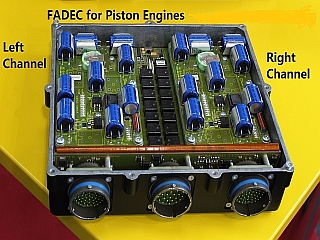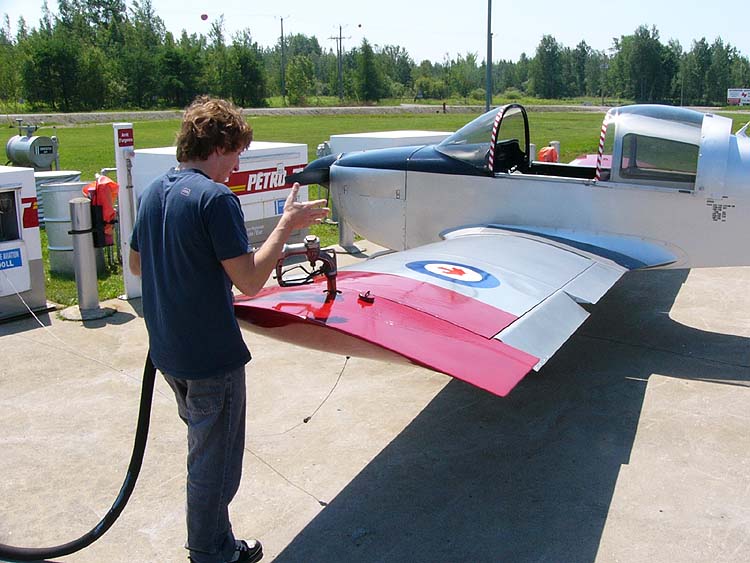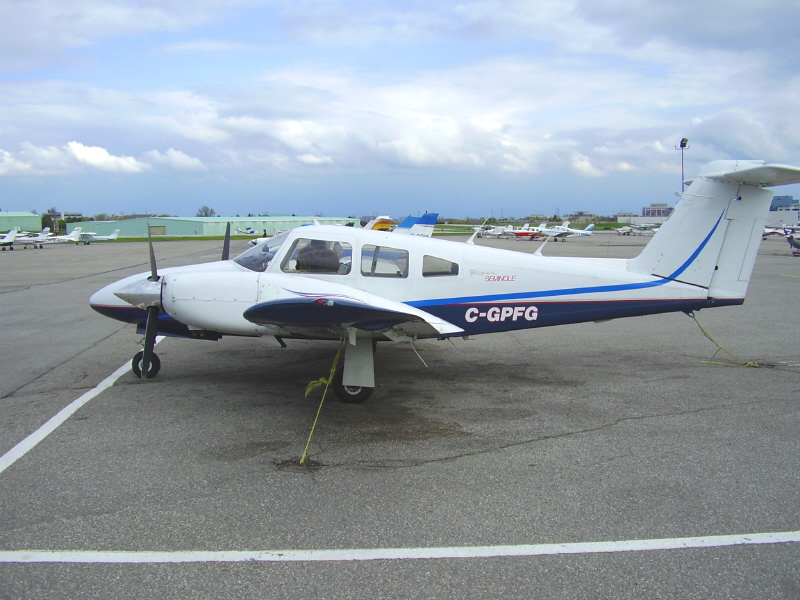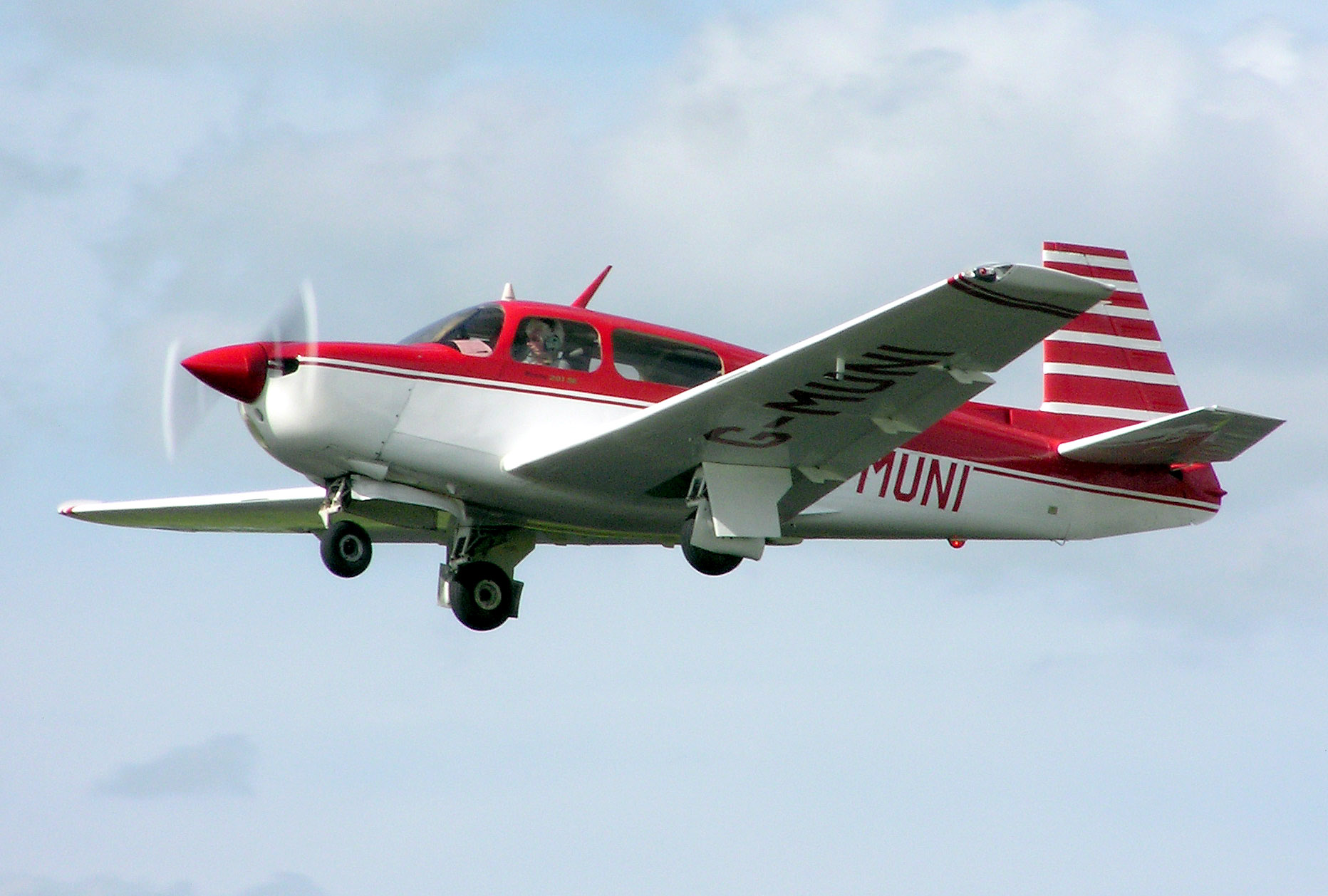|
DA40 Diamond Aircraft
The Diamond DA40 Diamond Star is an Austrian four-seat, single-engine, light aircraft constructed from composite materials. Built in both Austria and Canada, it was developed as a four-seat version of the earlier DA20 by Diamond Aircraft Industries. By the end of December 2020, 2,200 DA40s had been delivered, including 500 NG models. Development Based on the success of the earlier DV20/DA20 two-seat aircraft, the company designed a four-seat variant, the DA40 Diamond Star. The Rotax 914-powered prototype DA40-V1, registered OE-VPC, first flew on 5 November 1997 and was followed by a second prototype DA40-V2 (registered OE-VPE) which was powered by a Continental IO-240. In 1998 a third prototype DA40-V3 flew powered by a Lycoming IO-360 engine. Four more test aircraft were produced followed by the first production aircraft in 2000. JAR23 certification of the IO-360 production variant was obtained in October 2000. In 2002 the production of the Lycoming-engined variant was ... [...More Info...] [...Related Items...] OR: [Wikipedia] [Google] [Baidu] |
Light Aircraft
A light aircraft is an aircraft that has a Maximum Takeoff Weight, maximum gross takeoff weight of or less.Crane, Dale: ''Dictionary of Aeronautical Terms, third edition'', page 308. Aviation Supplies & Academics, 1997. Light aircraft are used as utility aircraft commercially for small-scale passenger and cargo aircraft, freight transport; for sightseeing, photography, cropdusting, and other so-called aerial work roles of civil aviation; for the personal-use aspect of general aviation; and in certain aspects of military aviation. Examples of aircraft that are at the maximum gross takeoff weight for this category include the de Havilland Canada DHC-6 Twin Otter and Beechcraft Super King Air, Beechcraft B200 Super King Air. Uses Uses include aerial surveying, such as monitoring pipelines, light cargo operations, such as regional airline, "feeding" cargo hubs, and passenger operations. Light aircraft are used for marketing purposes, such as banner towing and skywriting, and flig ... [...More Info...] [...Related Items...] OR: [Wikipedia] [Google] [Baidu] |
Glass Cockpit
A glass cockpit is an aircraft cockpit that features an array of electronic (digital) flight instrument display device, displays, typically large liquid-crystal display, LCD screens, rather than traditional Analog device, analog dials and gauges. While a traditional cockpit relies on numerous mechanical gauges (nicknamed "steam gauges") to display information, a glass cockpit uses several multi-function displays and a primary flight display driven by flight management systems, that can be adjusted to show flight information as needed. This simplifies aircraft operation and navigation and allows aviator, pilots to focus only on the most pertinent information. They are also popular with airline companies as they usually eliminate the need for a flight engineer, saving costs. In recent years the technology has also become widely available in small aircraft. As aircraft displays have modernized, the sensors that feed them have modernized as well. Traditional gyroscope, gyroscopic fli ... [...More Info...] [...Related Items...] OR: [Wikipedia] [Google] [Baidu] |
FADEC
A full authority digital engine (or electronics) control (FADEC) is a system consisting of a digital computer, called an "electronic engine controller" (EEC) or " engine control unit" (ECU), and its related accessories that control all aspects of aircraft engine performance. FADECs have been produced for both piston engines and jet engines. History The goal of any engine control system is to allow the engine to perform at maximum efficiency for a given condition. Originally, engine control systems consisted of simple mechanical linkages connected physically to the engine. By moving these levers the pilot or the flight engineer could control fuel flow, power output, and many other engine parameters. The mechanical/hydraulic engine control unit for Germany's BMW 801 piston aviation radial engine of World War II was just one notable example of this in its later stages of development. This mechanical engine control was progressively replaced first by analogue electronic engine cont ... [...More Info...] [...Related Items...] OR: [Wikipedia] [Google] [Baidu] |
Jet Fuel
Jet fuel or aviation turbine fuel (ATF, also abbreviated avtur) is a type of aviation fuel designed for use in aircraft powered by Gas turbine, gas-turbine engines. It is colorless to straw-colored in appearance. The most commonly used fuels for commercial aviation are Jet A and Jet A-1, which are produced to a standardized international specification. The only other jet fuel commonly used in civilian turbine-engine powered aviation is Jet B, which is used for its enhanced cold-weather performance. Jet fuel is a mixture of a variety of hydrocarbons. Because the exact composition of jet fuel varies widely based on petroleum source, it is impossible to define jet fuel as a ratio of specific hydrocarbons. Jet fuel is therefore defined as a performance specification rather than a chemical compound. Furthermore, the range of molecular mass between hydrocarbons (or different carbon numbers) is defined by the requirements for the product, such as the freezing point or smoke point. Keros ... [...More Info...] [...Related Items...] OR: [Wikipedia] [Google] [Baidu] |
Diesel Engine
The diesel engine, named after the German engineer Rudolf Diesel, is an internal combustion engine in which Combustion, ignition of diesel fuel is caused by the elevated temperature of the air in the cylinder due to Mechanics, mechanical Compression (physics), compression; thus, the diesel engine is called a compression-ignition engine (CI engine). This contrasts with engines using spark plug-ignition of the air-fuel mixture, such as a petrol engine (gasoline engine) or a gas engine (using a gaseous fuel like natural gas or liquefied petroleum gas). Introduction Diesel engines work by compressing only air, or air combined with residual combustion gases from the exhaust (known as exhaust gas recirculation, "EGR"). Air is inducted into the chamber during the intake stroke, and compressed during the compression stroke. This increases air temperature inside the Cylinder (engine), cylinder so that atomised diesel fuel injected into the combustion chamber ignites. The torque a dies ... [...More Info...] [...Related Items...] OR: [Wikipedia] [Google] [Baidu] |
Thielert
Technify Motors GmbH is an aircraft Diesel engine manufacturer based in Sankt Egidien, Germany. In July 2013, Chinese state-owned Aviation Industry Corporation of China (AVIC) acquired the aircraft Diesel engine designs and manufacturing assets of the former Thielert Aircraft Engines GmbH and added them to the Continental Motors Group as Technify Motors GmbH. The 5,000th engine was delivered in April 2017 after 15 years of production, accumulating more than 5.25 million flying hours and equipping over 2,750 aircraft. History Thielert AG was a German financial holding company that has owned engine development and manufacturing companies. It was headquartered in Hamburg. Companies owned were Thielert Aircraft Engines GmbH with sites in Lichtenstein, Saxony and Altenburg, Thuringia. Thielert AG was quoted on the Frankfurt Stock Exchange and was a member of the SDAX. Founded in 1989, turnover increased from €3.3 million in 1997 to €16.2 million in 2002, while employees grew ... [...More Info...] [...Related Items...] OR: [Wikipedia] [Google] [Baidu] |
Carburetor
A carburetor (also spelled carburettor or carburetter) is a device used by a gasoline internal combustion engine to control and mix air and fuel entering the engine. The primary method of adding fuel to the intake air is through the Venturi effect or Bernoulli's principle or with a Pitot tube in the main metering circuit, though various other components are also used to provide extra fuel or air in specific circumstances. Since the 1990s, carburetors have been largely replaced by fuel injection for cars and trucks, but carburetors are still used by some small engines (e.g. lawnmowers, generators, and concrete mixers) and motorcycles. In addition, they are still widely used on piston-engine–driven aircraft. Diesel engines have always used fuel injection instead of carburetors, as the compression-based combustion of diesel requires the greater precision and pressure of fuel injection. Etymology The term ''carburetor'' is derived from the verb ''carburet'', which means "to ... [...More Info...] [...Related Items...] OR: [Wikipedia] [Google] [Baidu] |
Takeoff
Takeoff is the phase of flight in which an aerospace vehicle leaves the ground and becomes airborne. For aircraft traveling vertically, this is known as liftoff. For aircraft that take off horizontally, this usually involves starting with a transition from moving along the ground on a runway. For balloon (aircraft), balloons, helicopters and some specialized fixed-wing aircraft (VTOL aircraft such as the Hawker Siddeley Harrier, Harrier and the Bell Boeing V22 Osprey), no runway is needed. Horizontal Power settings For light aircraft, usually full power is used during takeoff. Large transport category (airliner) aircraft may use a flex temp, reduced power for takeoff, where less than full power is applied in order to prolong engine life, reduce maintenance costs and reduce noise emissions. In some emergency cases, the power used can then be increased to increase the aircraft's performance. Before takeoff, the engines, particularly piston engines, are routinely run up at high po ... [...More Info...] [...Related Items...] OR: [Wikipedia] [Google] [Baidu] |
Avgas
Avgas (aviation gasoline, also known as aviation spirit in the United Kingdom, UK) is an aviation fuel used in aircraft with spark-ignited internal combustion engines. ''Avgas'' is distinguished from conventional gasoline (petrol) used in motor vehicles, which is termed ''mogas'' (motor gasoline) in an aviation context. Unlike motor gasoline, which has been formulated without lead since the 1970s to allow the use of catalytic converters for pollution reduction, the most commonly used grades of avgas still contain tetraethyllead, tetraethyl lead, a toxic lead-containing additive used to aid in lubrication of the engine, increase octane rating, and prevent engine knocking (spark-knock). There are ongoing efforts to reduce or eliminate the use of lead in aviation gasoline. Kerosene-based jet fuel is formulated to suit the requirements of gas turbine, turbine engines which have no octane requirement and operate over a much wider flight envelope than piston engines. Kerosene is also ... [...More Info...] [...Related Items...] OR: [Wikipedia] [Google] [Baidu] |
Lycoming O-360
The Lycoming O-360 is a family of four-cylinder, direct-drive, horizontally opposed, air-cooled, piston aircraft engines. Engines in the O-360 series produce between , with the basic O-360 producing . The engine family has been installed in thousands of aircraft, including the Cessna 172, Piper Cherokee/Archer, Grumman Tiger, and many home-built types. It has a factory rated time between overhaul (TBO) of 2000 hours or twelve years. O-360 family engines are also widely used in airboats, most notably in the Hurricane Aircats used by the US Army during the Vietnam War. The first O-360 certified was the A1A model, certified on 20 July 1955 to United States CAR 13 effective March 5, 1952 as amended by 13-1 and 13-2. The Lycoming IO-390 is an O-360 which has had its cylinder bore increased by , developing . Series The O-360 family of engines comprises 167 different models with 12 different prefixes. All have a displacement and bore and stroke. * O-360 carbureted seri ... [...More Info...] [...Related Items...] OR: [Wikipedia] [Google] [Baidu] |
T-tail
A T-tail is an empennage wikt:configuration, configuration in which the tailplane of an aircraft is mounted to the top of the vertical stabilizer, fin. The arrangement looks like the capital letter T, hence the name. The T-tail differs from the standard configuration in which the tailplane is mounted to the fuselage at the base of the fin. Advantages T-tails were common in early jet aircraft. Designers were worried that an engine failure would otherwise damage the horizontal tail. The T-tail is very common on aircraft with engines mounted in nacelles on a Wing_configuration#Number_and_position_of_main_planes, high-winged aircraft or on aircraft with the engines mounted on the rear of the fuselage, as it keeps the tail clear of the jet exhaust. Rear-mounting the engines keeps the wings clean and improves short-field performance. This was necessary in early jet aircraft with less powerful engines. T-tail aircraft can have better short-field performance, such as on the Bri ... [...More Info...] [...Related Items...] OR: [Wikipedia] [Google] [Baidu] |
Tricycle Landing Gear
Tricycle gear is a type of aircraft undercarriage, or ''landing gear'', that is arranged in a tricycle fashion. The tricycle arrangement has one or more nose wheels in a single front undercarriage and two or more main wheels slightly aft of the center of gravity. Tricycle gear aircraft are the easiest for takeoff, landing and taxiing, and consequently the configuration is now the most widely used on aircraft.Crane, Dale: ''Dictionary of Aeronautical Terms, third edition'', page 524. Aviation Supplies & Academics, 1997. Aviation Publishers Co. Limited, ''From the Ground Up'', page 11 (27th revised edition) History Several early aircraft had primitive tricycle gear, notably very early Antoinette planes and the Curtiss Pushers of the pre-World War I Pioneer Era of aviation. Waldo Waterman's 1929 tailless '' Whatsit'' was one of the first to have a steerable nose wheel. In 1956, Cessna introduced sprung-steel tricycle landing gear on the Cessna 172. Their marketing depart ... [...More Info...] [...Related Items...] OR: [Wikipedia] [Google] [Baidu] |











